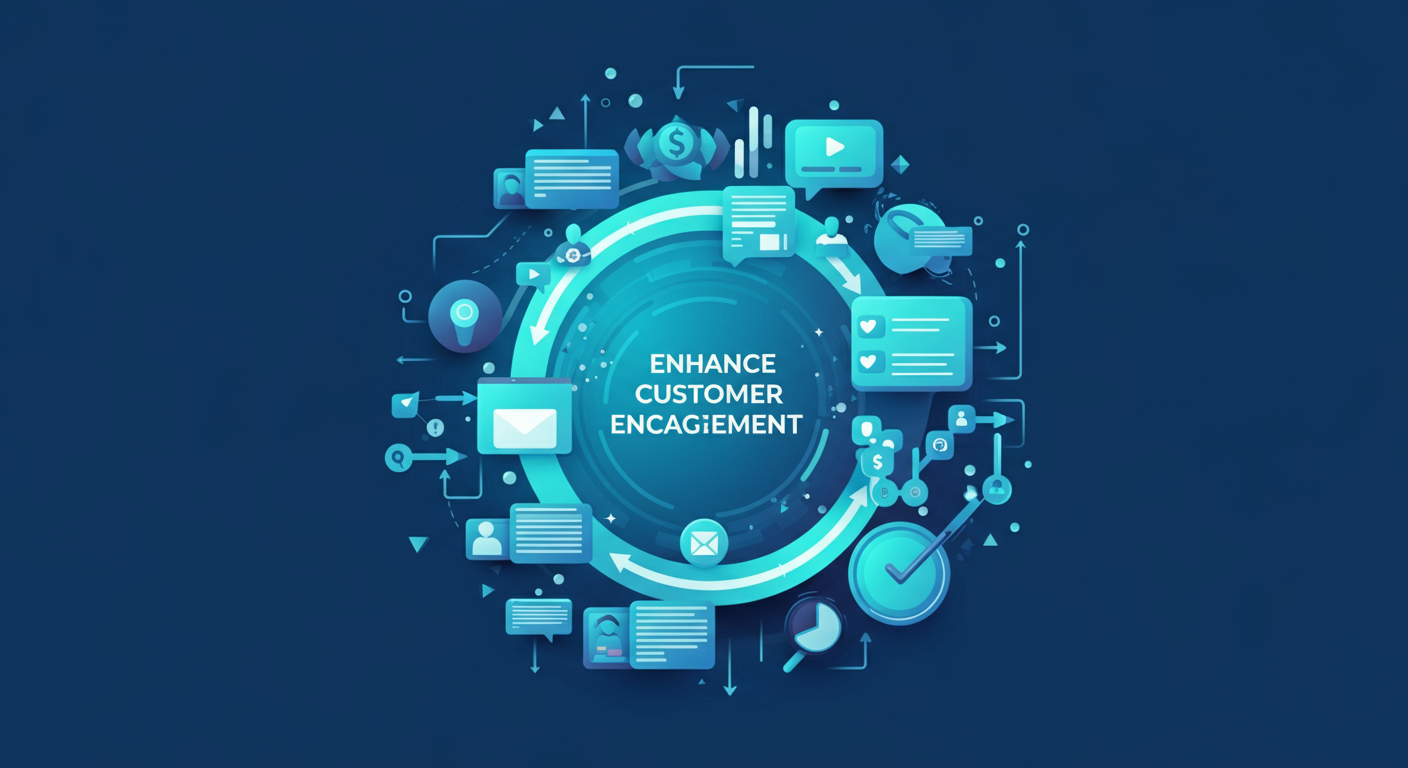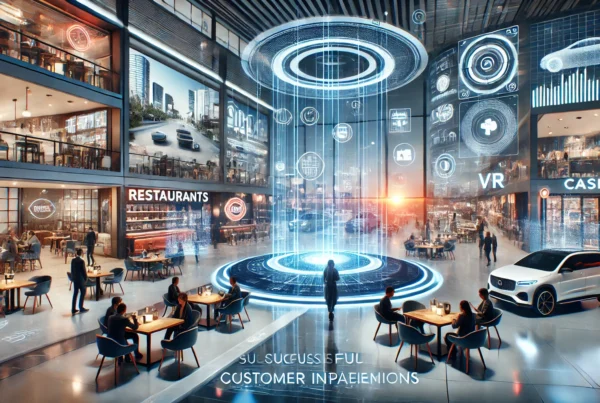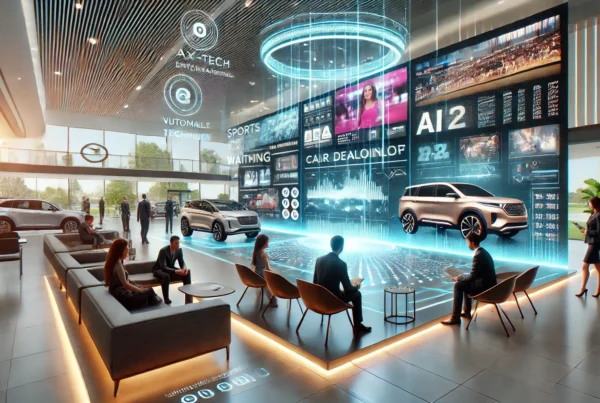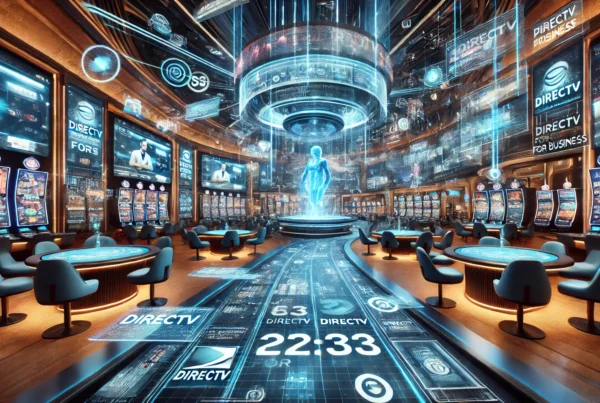In today’s fast-paced digital landscape, businesses are constantly seeking innovative ways to capture their audience’s attention and foster lasting connections. One powerful tool that stands out in this endeavor is video programming. With its dynamic ability to convey stories and evoke emotions, video content has become a cornerstone in enhancing customer engagement. But how exactly can businesses leverage this medium to not only attract but also retain and nurture their customer base?
For industries such as hospitality, gaming, automotive, and private offices, the answer lies in crafting video content that resonates with their specific audience. Imagine a restaurant using a behind-the-scenes cooking video to entice diners with its culinary expertise, or a car dealership showcasing a virtual tour of the latest models. These tailored video experiences not only draw in potential customers but also build a sense of community and loyalty.
At Sports Direct, our mission is to empower businesses in these sectors with comprehensive video programming solutions that drive engagement and enhance customer experiences. By integrating strategic video content into your marketing efforts, you can transform casual viewers into devoted patrons. This blog post will explore effective strategies and real-world examples of how businesses can harness the potential of video programming to boost customer engagement and achieve sustainable growth.
Ready to dive into the world of video programming and discover how it can revolutionize your customer engagement efforts? Let’s explore the key strategies and insights that will guide you on this transformative journey.
Understanding the Impact of Video Programming on Engagement
In the digital age, video programming has emerged as a powerful tool for enhancing customer engagement. With its ability to convey dynamic and interactive content, video programming captures attention more effectively than traditional text. Studies indicate that video content significantly boosts engagement, leading to higher retention rates and increased customer loyalty. This section explores how video programming can transform customer interactions and drive business growth.
Businesses across various industries, including hospitality, gaming, automotive, and private offices, are leveraging video programming to create memorable customer experiences. By integrating engaging video content into their marketing strategies, these businesses can foster deeper connections with their audience and promote brand loyalty. Let’s delve into the ways video programming impacts customer engagement and the strategies that can maximize its effectiveness.
Statistics on Video Engagement
Video content is a game-changer when it comes to engaging audiences. According to a report by HubSpot, 54% of consumers prefer to see video content from brands they support. This preference translates into higher engagement rates, as videos are more likely to be shared, liked, and commented on compared to other content forms. Moreover, videos on social media generate 1,200% more shares than text and image content combined, highlighting their viral potential.
Another compelling statistic from Wyzowl’s State of Video Marketing Survey reveals that 84% of consumers have been convinced to buy a product or service by watching a brand’s video. This underscores the persuasive power of video content in the customer journey, from awareness to decision-making. By understanding these statistics, businesses can tailor their video programming strategies to align with consumer preferences and maximize engagement.
Successful Video Strategies
To harness the full potential of video programming, businesses need to implement effective strategies that resonate with their target audience. One successful approach is storytelling. Videos that tell compelling stories can evoke emotions and create a lasting impact. For instance, a car dealership might use a narrative video to showcase a customer’s journey with their new vehicle, building an emotional connection with potential buyers.
Another strategy is personalization. By tailoring video content to individual preferences, businesses can enhance the viewer’s experience and foster a sense of connection. Personalized video messages, product recommendations, and interactive elements can make viewers feel valued and understood, strengthening their loyalty to the brand. Additionally, businesses can leverage live video to engage audiences in real-time, offering Q&A sessions, product launches, or behind-the-scenes tours.
Insights from Competitor Content
Analyzing competitor content can provide valuable insights into successful video programming strategies. For example, companies like Questline Digital have effectively used video series to boost customer engagement. By creating a series of interconnected videos, they maintain audience interest over time and encourage repeat viewings. This approach not only increases engagement but also builds a loyal following.
Another insight from competitors is the importance of optimizing videos for mobile viewing. With a significant portion of online content consumed on mobile devices, ensuring videos are accessible and visually appealing on smaller screens is crucial. Competitors also highlight the value of user-generated content, encouraging customers to share their experiences through video testimonials, which can enhance brand authenticity and reach.
Implementing Video Programming in Your Business Strategy
Integrating video programming into your business strategy is a powerful way to enhance customer engagement and foster loyalty. However, successful implementation requires careful planning and alignment with your business goals. By following a structured approach, you can effectively incorporate video content that resonates with your audience and drives meaningful interactions.
In this section, we’ll explore actionable steps to integrate video programming into your business strategy, ensuring that your efforts are well-planned, executed, and evaluated for maximum impact. Let’s dive into the essential components of a successful video programming strategy.
Planning Your Video Strategy
Before diving into video production, it’s crucial to plan your strategy. Start by identifying your target audience and understanding their preferences and needs. This knowledge will guide the type of content you create and how you deliver it. Consider conducting surveys or focus groups to gather insights directly from your audience.
Next, set clear objectives for your video programming. Whether it’s increasing brand awareness, driving website traffic, or boosting sales, having specific goals will help you measure success. Align these objectives with your overall business goals to ensure consistency and relevance.
Create a content calendar to organize your video production schedule. This will help you maintain a steady stream of content and keep your audience engaged over time. Consider incorporating a mix of content types, such as tutorials, behind-the-scenes footage, and customer testimonials, to keep your programming diverse and interesting.
Executing Your Video Content
With a solid plan in place, it’s time to execute your video content. Start by assembling a skilled team or partnering with a professional video production company to ensure high-quality results. Pay attention to the technical aspects, such as lighting, sound, and editing, to create polished and professional videos.
When creating your videos, focus on storytelling. Craft narratives that resonate with your audience and evoke emotions. A compelling story can capture attention and leave a lasting impression. Additionally, consider incorporating interactive elements, such as clickable links or quizzes, to engage viewers actively.
Optimize your videos for different platforms and devices. Ensure they are mobile-friendly, as a significant portion of video content is consumed on mobile devices. Use captions and subtitles to make your videos accessible to a broader audience, including those with hearing impairments or those watching without sound.
Evaluating and Refining Your Strategy
After launching your video programming, it’s essential to evaluate its performance. Use analytics tools to track key metrics such as view count, engagement rate, and conversion rate. These insights will help you understand what resonates with your audience and where improvements are needed.
Regularly review and refine your strategy based on feedback and performance data. Experiment with different content types, formats, and distribution channels to see what works best for your audience. Stay updated with industry trends and technological advancements to keep your video programming fresh and relevant.
Finally, encourage feedback from your audience. Engage with them through comments, surveys, or direct messages to gather insights and build a community around your brand. By actively listening to your audience, you can continuously improve your video programming and enhance customer engagement.
Measuring the Success of Your Video Programming
Understanding the effectiveness of your video programming is crucial for enhancing customer engagement and achieving a solid return on investment (ROI). By evaluating key performance indicators (KPIs) and gathering feedback, businesses can refine their strategies to better connect with their audience. Let’s explore the essential metrics and methods for assessing the success of your video programming efforts.
To ensure your video content resonates with viewers and drives engagement, it’s important to focus on specific KPIs. These metrics provide valuable insights into how well your videos are performing and where improvements can be made. Additionally, gathering feedback from your audience can help you tailor your content to meet their preferences and expectations.
Key Performance Indicators (KPIs) for Video Programming
When it comes to measuring the success of your video programming, several KPIs stand out. View count is a basic yet essential metric, indicating how many times your video has been watched. However, it’s important to look beyond just the numbers. Engagement rate, which includes likes, shares, and comments, provides a deeper understanding of how viewers are interacting with your content.
Another critical KPI is the average watch time. This metric reveals how long viewers are staying engaged with your video, helping you identify which parts are most captivating. A higher average watch time suggests that your content is resonating with your audience. Additionally, the conversion rate measures how effectively your video is driving viewers to take desired actions, such as signing up for a newsletter or making a purchase.
Methods for Gathering and Analyzing Feedback
To refine your video programming strategy, it’s important to gather feedback directly from your audience. Conducting surveys and polls can provide valuable insights into viewer preferences and expectations. Encourage viewers to share their thoughts through comments or direct messages on social media platforms.
Analyzing feedback is equally important. Use tools like sentiment analysis to understand the overall tone of viewer comments. This can help you identify areas for improvement and adjust your content accordingly. Additionally, consider hosting focus groups or interviews with a select group of viewers to gain more in-depth insights into their experiences with your videos.
Using Data Visualization to Present Video Performance
Presenting data in a clear and visually appealing manner can enhance your understanding of video performance. Utilize charts and graphs to display KPIs such as view counts, engagement rates, and conversion rates over time. This visual representation can help you identify trends and patterns, making it easier to make informed decisions about your video programming strategy.
For instance, a line graph showing the increase in engagement rates after implementing a new video strategy can clearly demonstrate its effectiveness. Similarly, a bar chart comparing conversion rates across different video formats can help you determine which types of content are most successful in driving desired actions.
By regularly reviewing these visualizations, you can stay informed about the performance of your video programming and make data-driven adjustments to optimize engagement and ROI.
Maximize Engagement with Strategic Video Programming
In an era where capturing attention is more challenging than ever, strategic video programming emerges as a powerful solution to enhance customer engagement. By leveraging the unique capabilities of video content, businesses in industries such as hospitality, gaming, automotive, and private offices can create memorable experiences that resonate with their audience. The journey doesn’t end with creating engaging content; it involves a continuous process of refinement based on insights and feedback.
Throughout this blog post, we’ve explored how video programming can transform casual viewers into loyal customers. By implementing successful strategies like storytelling, personalization, and live video interactions, businesses can forge emotional connections and foster brand loyalty. The statistics speak for themselves—videos significantly boost engagement rates and have the power to influence purchasing decisions.
- Storytelling: Craft narratives that evoke emotions and leave a lasting impact.
- Personalization: Tailor video content to individual preferences for a more intimate connection.
- Live Video: Engage audiences in real-time with interactive sessions.
- Mobile Optimization: Ensure videos are accessible and appealing on all devices.
As you embark on your video programming journey, remember that the key to success lies in continuous evaluation and adaptation. Utilize analytics to measure performance and gather audience feedback to refine your strategies. Stay informed about industry trends and technological advancements to keep your content fresh and engaging.
Ready to take your customer engagement to the next level? Visit Sports Direct to explore more resources and discover how our video programming solutions can revolutionize your business. Whether you’re in hospitality, gaming, automotive, or managing private offices, our tailored strategies are designed to meet your unique needs. Let’s transform your customer interactions together.








